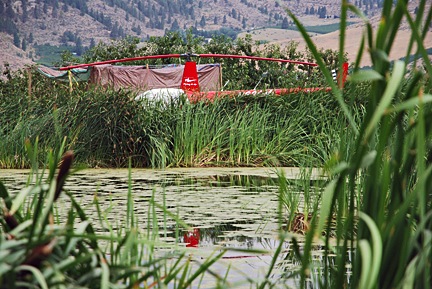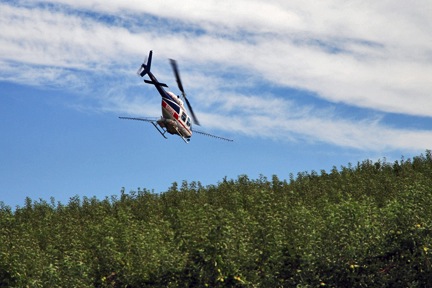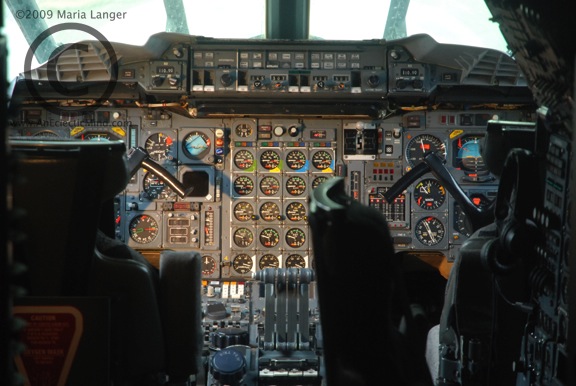I want pilots to know what they’re doing — and prove it.
In the first part of this post, I explained the prerequisites to taking the tests you need to take to become a pilot. If you haven’t read that yet, read it now.
In this part, I’ll tell you about the two tests: the knowledge (AKA “written”) test and the practical test (AKA “check ride”). You’ll also find a few links to useful resources to help you pass them.
Written Test
The first of two tests you must pass to become a helicopter pilot is the knowledge test, which is also known as the “written test.” This is the test that has Stu — remember the blog reader from Part I? — so worried.
The written test is proof that you understand all the things you learned in ground school. If you don’t know or understand these things, you won’t pass the test.
The written test isn’t really a written test. It’s a multiple choice test with four possible answers per question. You can get a study guide that actually lists all the questions with their answers. This is possibly the best way to cram for the test — if you like to cram. It’s not the best way to learn the material, though.
Want to see what’s on the test? Download all the questions.
Want to learn? Talk to a flight instructor and other pilots. Watch the videos. Read the AIM. Read articles in Vertical, Rotor & Wing, HeliNews, and even Flight Training. Visit blogs and forums where experienced pilots discuss flying issues. Ask questions; listen to answers. Hang out at airports. Buy a scanner and listen to the local airport chatter.
The written test and ground school knowledge are important . It makes me very sad that Stu (and so many others like him) isn’t taking it as seriously as he should. After all, the first time he gets hit with LTE in a hover, is he going to know how it’s caused and what he can do to stop it? When he does a photo flight with a fattie on board on a hot day in that R22, will he know how to avoid settling with power? Will he understand the danger of thunderstorms or virga or what a lenticular cloud means? Will he know what to expect when flying close over the top of a mountain ridge with a tail wind? Will he be able to read a chart well enough to keep out of a restricted area or learn whether military operations in an MOA affect his operating altitude? Will he bust Class Bravo airspace because he doesn’t know which magic words from ATC grant him entry? When the clutch light flickers on in his R22, will he know what to do?
How can anyone consider himself a pilot if he doesn’t possess the basic knowledge required to be a pilot? Passing a multiple choice test about the basics of flying the aircraft is the least a future pilot should be required to do.
And you must pass the knowledge test before you can move forward to take the big test. FAR Part 61.39, “Prerequisites for Practical Tests,” starts with:
(a) Except as provided in paragraphs (b) and (c) of this section, to be eligible for a practical test for a certificate or rating issued under this part, an applicant must:
(1) Pass the required knowledge test within the 24-calendar-month period preceding the month the applicant completes the practical test, if a knowledge test is required;
(2) Present the knowledge test report at the time of application for the practical test, if a knowledge test is required;
It’s a really good idea to take and pass the knowledge test as soon as you get the required endorsement. It gets a big part of the learning process out of the way, clearing your mind so you can concentrate on the flying and use your knowledge to understand how the flying works.
It also starts a clock ticking: once you pass, you have just 2 years to take and pass practical test. Otherwise, you’ll have to take the written test all over again. How’s that for a motivator?
Check Ride
Once you’ve met all the other requirements above and have passed your written text, you’re ready for the practical test, which is better known as a “check ride” or “check flight.” The practical test is administered by a special examiner who is authorized by the FAA. In some instances, it might be a CFI at your flight school. It could also be someone who works directly or indirectly for the FAA.
I personally believe that a check ride with the FAA or an examiner not employed by your flight school is a better check ride. Your flight school has too much riding on your test and might pass or fail you based on any number of factors other than your knowledge or ability.
Did you pay a flat fee for all your training with a guarantee of completion with a set number of flight hours? Are you near the end of that time? What’s the flight school’s motivation? Do you really want to become a helicopter pilot if you’re not ready? Sadly, a now-defunct flight school that passed too many students before they were ready has gotten a reputation for it. Many of those students, now pilots looking for jobs, aren’t even getting interviews.
In 2001, I was ready to take my commercial check ride. My CFI signed me off just before he left for a job at the Grand Canyon. But my new CFI, following instructions from the chief flight instructor, claimed I couldn’t perform the most basic of maneuvers. They refused to give me a stage check I needed to get an endorsement for my check ride. Shocked, I left the flight school and went to another. I took and passed my check ride after only 10 days there.
It was pretty obvious that the first school wanted to keep my $200/hour of dual flight revenue flowing in as long as possible.
Or perhaps the flight school’s enrollment is down and they need your hourly dual rate revenue to pay their bills. What’s the flight school’s motivation? Do you really want to keep financing your flight school?
Before I go any further, I should remind you that before you take your practical test, you need to meet the rest of the requirements of FAR Part 61.39, “Prerequisites for practical tests.” I won’t quote them here; use the link to read them for yourself. In general, no good flight school will sign you off until you meet these requirements. If they do and you go to take the test, you’re likely to have the test stopped before it gets going. That would be a real embarrassment, because it would show the examiner that you didn’t bother to read Part 61.39 and have wasted his time.
The practical test is actually two tests in one. The first part is an oral exam, where the examiner asks a bunch of questions he thinks you need to know answers for. These are usually the same questions covered in the written test — but there’s no multiple choice crutch to lean on. There are also questions specific to the helicopter you’ll be tested in. Better know the engine horsepower, RPM limits, emergency procedures, fuel capacity, best RPM and speed settings to extend your range in autorotation, and just about anything else in the POH. This part of the test can be as short as an hour or as long as three or four. It depends on the examiner and how confident you can make him about your knowledge.
Once the oral part is finished, the flight part begins. FAR Part 61.43, “Practical Tests: General Procedures,” gives a good idea of what the goal is. It starts with:
(a) Except as provided in paragraph (b) of this section, the ability of an applicant for a certificate or rating issued under this part to perform the required tasks on the practical test is based on that applicant’s ability to safely:
(1) Perform the tasks specified in the areas of operation for the certificate or rating sought within the approved standards;
(2) Demonstrate mastery of the aircraft with the successful outcome of each task performed never seriously in doubt;
(3) Demonstrate satisfactory proficiency and competency within the approved standards;
(4) Demonstrate sound judgment; and
(5) Demonstrate single-pilot competence if the aircraft is type certificated for single-pilot operations.
This is the meat of the matter. Does the pilot know what he’s doing? Can he prove it beyond doubt?
The flight part of the test usually includes preflight inspection with questions, examination of aircraft documents, and the flight itself. Then you fly. From the moment you step in to the moment you step out, the examiner is watching you. If he thinks, for even a moment, that you’re unsafe or don’t know what you’re doing, he’ll fail you. If you scare the crap out of him — or even make a big boo-boo — he’ll stop the test.
Want to know what the entire practical test will cover? Download the Practical Test Standards.
Pass it and you’re a pilot.
And That’s All There Is to It
Yes, the heading is a joke. Getting a pilot’s license is not easy. But should it be?
Let’s face it: a pilot flies aircraft over the ground. If he screws up and crashes, he can kill innocent people on the ground as well as his passengers. It’s a heavy responsibility. Don’t you want pilots to know what they’re doing? I do.
Flying is not something to be taken lightly. Want proof? Search this. I’d say that 95% of aviation accidents are due, in one way or another, to pilot error. Don’t think so? Read the reports. I do.
My message for “Stu” is this: If you want to be a pilot, get serious about it. Study hard, learn what pilots need to know. Stop making excuses. Put up or shut up.
Because the last thing the world needs is another “lazy” pilot.







